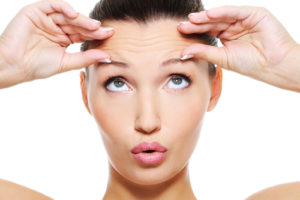 Can people take Botox too far? Yes, absolutely. As with any cosmetic treatment, it’s important to find a balance between too little and too much. But are those getting Botox in their 20’s falling prey to over-treating, or have they figured out the secret to wrinkle prevention? Believe it or not, many experts feel they fall into the latter camp.
Can people take Botox too far? Yes, absolutely. As with any cosmetic treatment, it’s important to find a balance between too little and too much. But are those getting Botox in their 20’s falling prey to over-treating, or have they figured out the secret to wrinkle prevention? Believe it or not, many experts feel they fall into the latter camp.
JAMA Dermatology has stated that it is “rarely too early” to start conservative Botox or filler treatment. Because lines are due to repetitive muscle movements and folding of the skin, acting early can make a big difference. Called “prejuvenation,” this process could be beneficial for your anti-aging – as long as you approach it responsibly. Details and recommendations are below – get in touch if you have any questions about your own Botox candidacy, no matter your age.
Why is Preventive Botox Good Planning?
Young adults benefit from preventive cosmetic injections for a few reasons.
- It’s easier to prevent wrinkles from forming that treat existing ones later on in life. If you wait to fix wrinkles until your 40’s-60’s, there are many more present and more involved treatment (that may extend past injections) will be necessary for ideal results.
- Early and repetitive Botox use helps train facial muscles responsible for wrinkles so that frown lines are less likely even without active treatment. A 2006 study followed the aging process in twins over the course of 13 years. One received regular Botox treatments, and one did not – and the twin with Botox saw less noticeable crow’s feet, forehead, and glabellar lines, even at seven months out from her most recent treatment.
When Should I Start Botox Treatment?
Early injections aren’t beneficial for everyone. You need to make sure that you fit the profile for whom preventive treatment is recommended. If you notice that your facial expressions are already beginning to cause lines, especially on the forehead, between the brows, or around the eyes, injections could be a wise investment. Some of us have more naturally expressive faces than others, and it’s those faces that tend to wrinkle the most.*
*Disclaimer: Please note that there is no guarantee of specific results. Results may vary.
